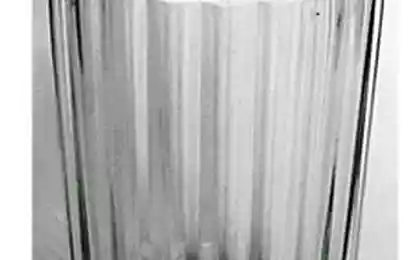1830
Architects Competition
Some animals sufficiently warm and safe place to live, while others want to live like kings. These 13 creatures - the best architects in the animal world.
Animals are very careful in the construction of their home, whether it's nest or hive dam (in the case of beavers), they choose only the best materials. Without cranes, cement and iron, these little animals create a truly amazing building, causing us to you envy and respect.
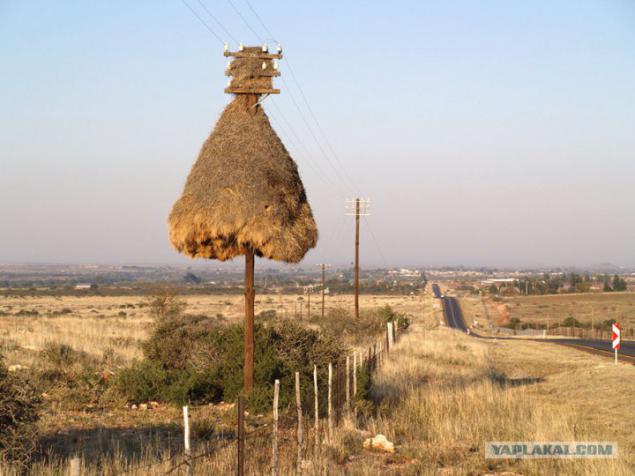
Weaver ... Sociable weaver living in South Africa, Namibia and Botswana. They create these huge nests, where hundreds of birds can live for several generations. Nests of sticks and grass, built to last and also retain heat well.
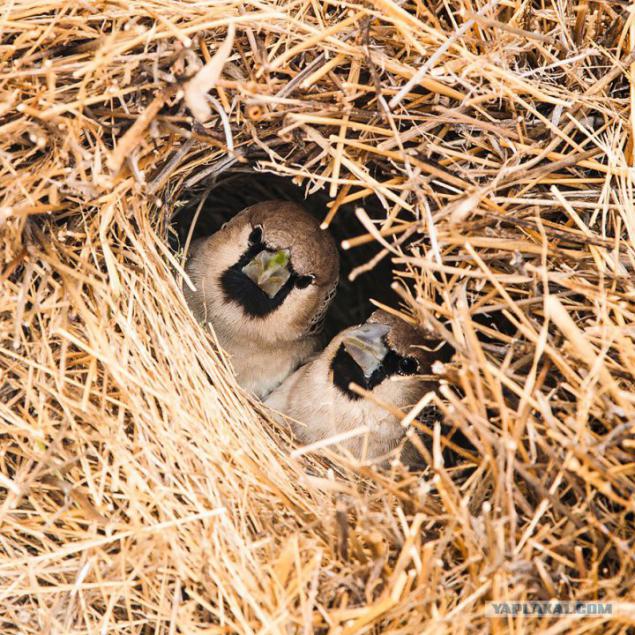
...
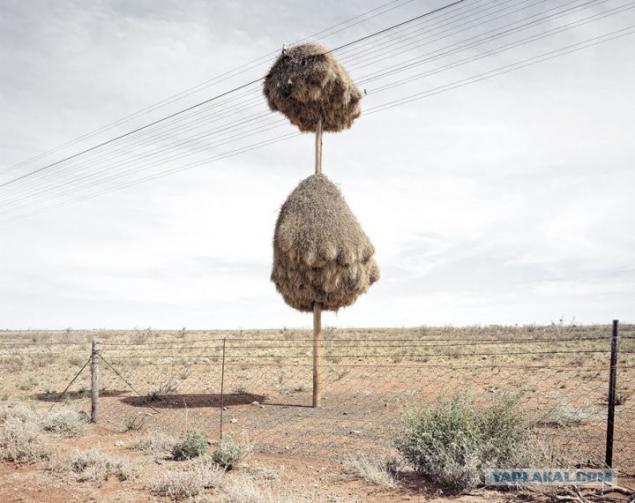
...
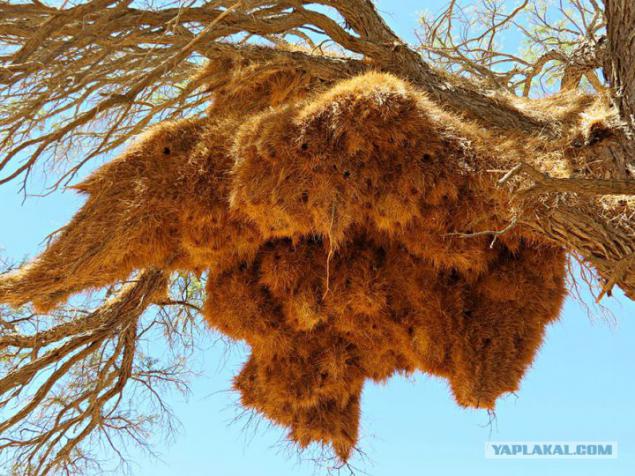
...
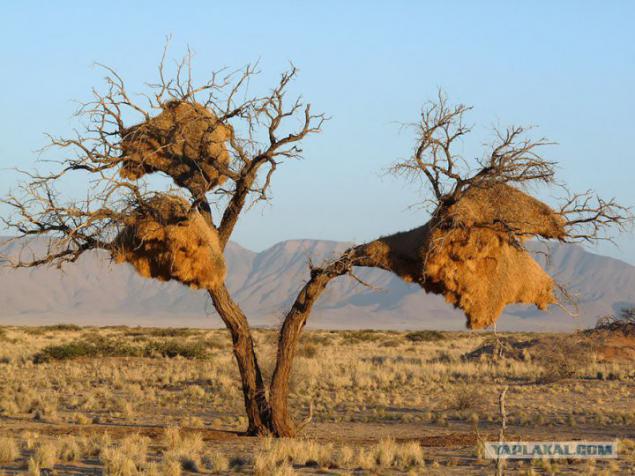
Australian ant-tailor ... These ants live in Central Africa and Southeast Asia. These leaves are glued using larval silk.
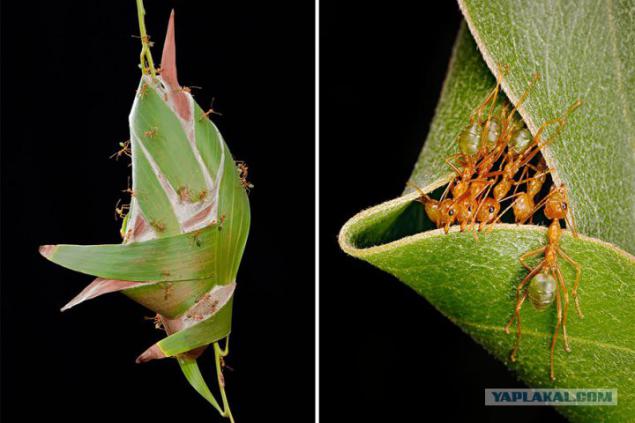
Krasnouhov whistler ... Males of these birds build small huts made of grass and sticks to attract females for mating. As these designers they decorate the home berries, insects and other bright elements. Oddly enough, the females do not use these houses for rearing.
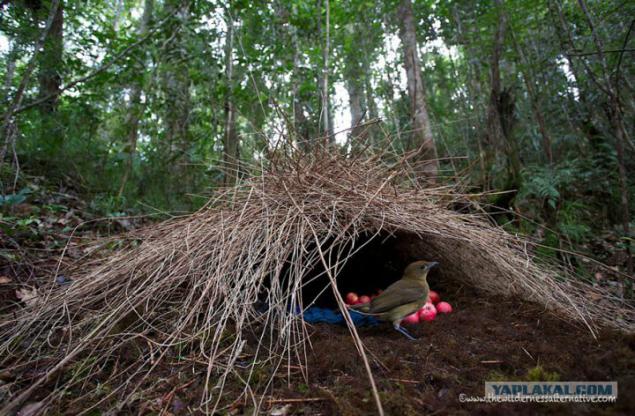
...
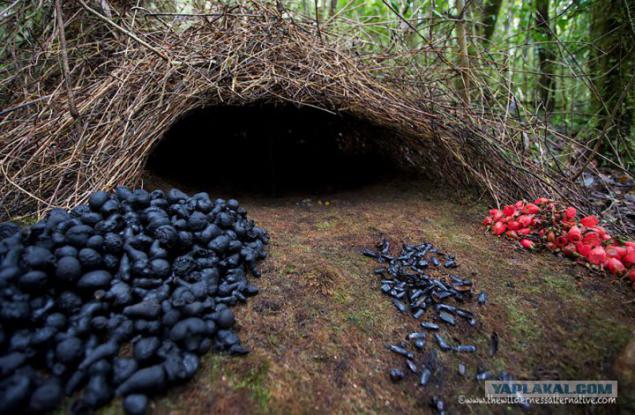
...
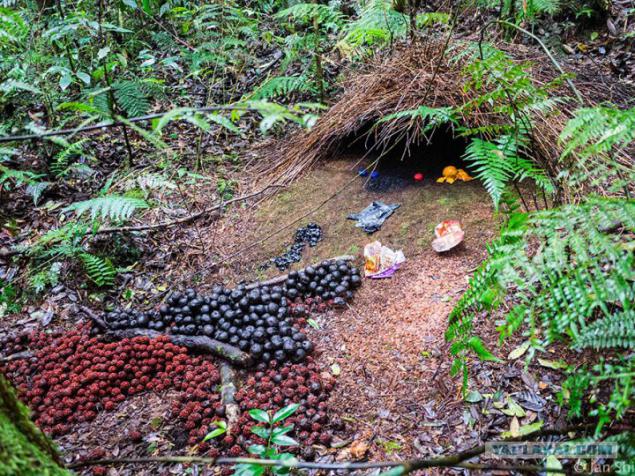
...

...
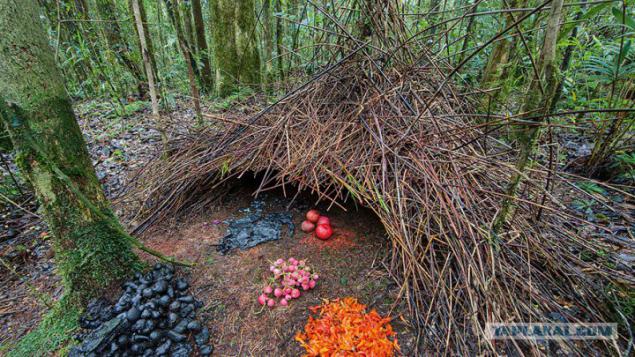
Termites ... Termites build their nests in the form of a large wedge-shaped mounds. Structures always oriented north-south, which allows them to regulate the temperature inside.
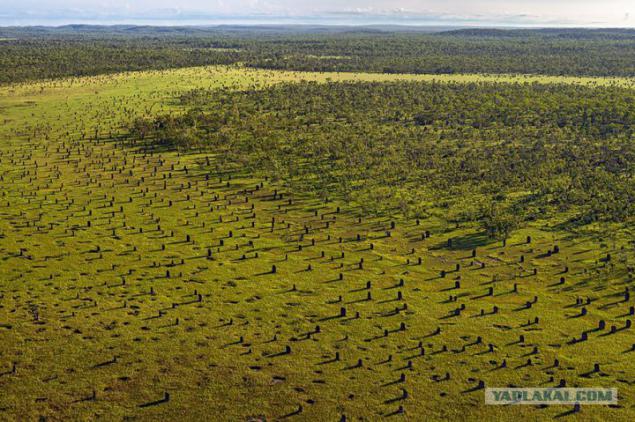
...
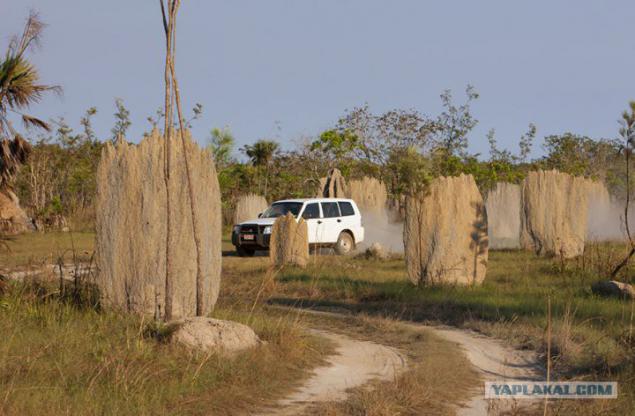
...
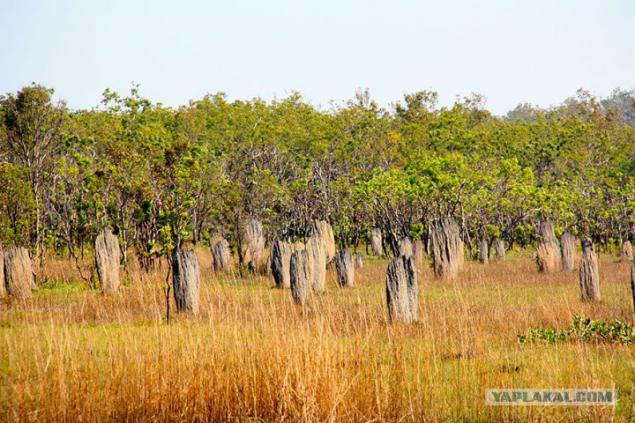
Bees ... The whole life of honeybees revolves around their hive. They build their houses out of wax, making them honey and raise their young.

...
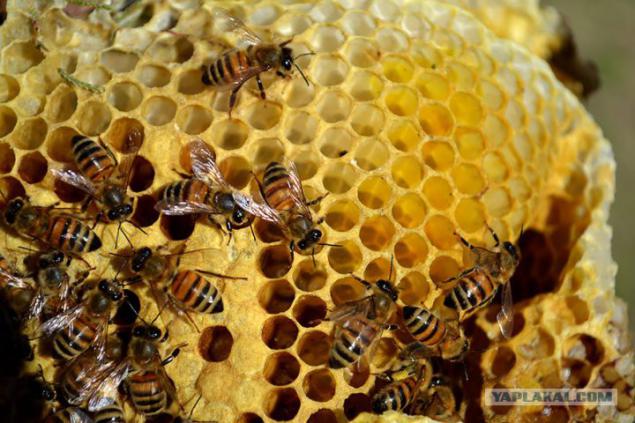
European small forest ant ... Anthills they build in the form of large mounds on a grassy substrate. Several mounds can be linked together, allowing the colony to escape in case of danger.
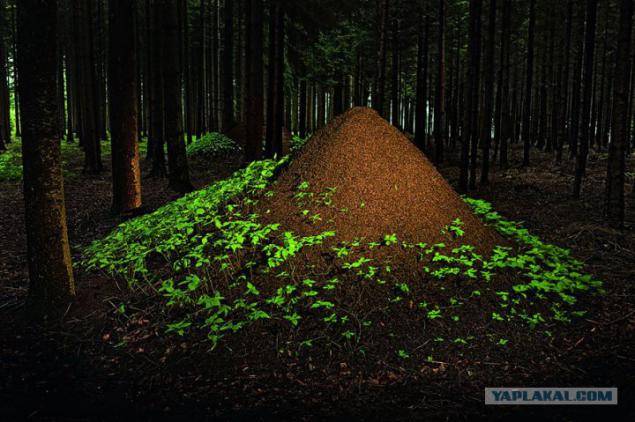
Rufous hornero ... Rufous hornero builds its nest of mud and dirt. Their nests from predators and rescue are generally very safe place.

...
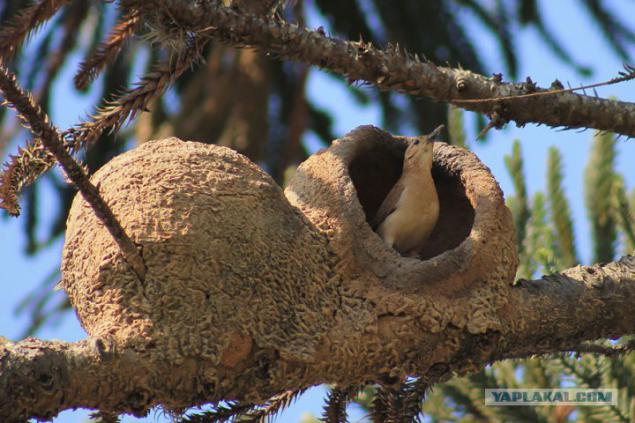
Weaver Weaver ... Bahia Bahia builds its nest in trees over water bodies where predators can not reach.
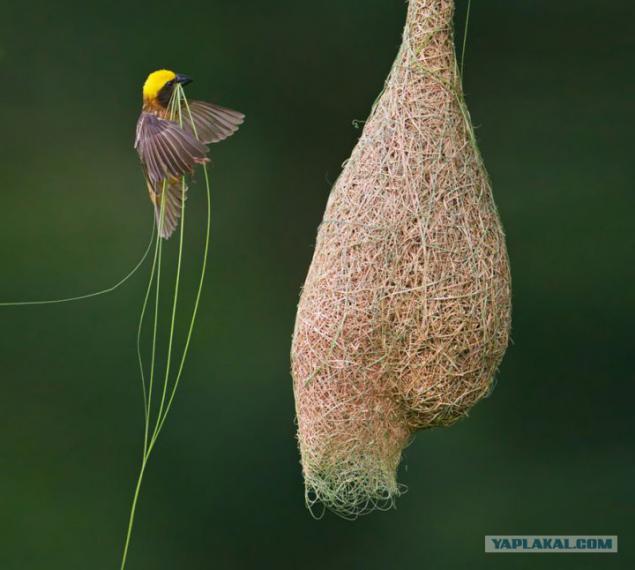
...

...

...
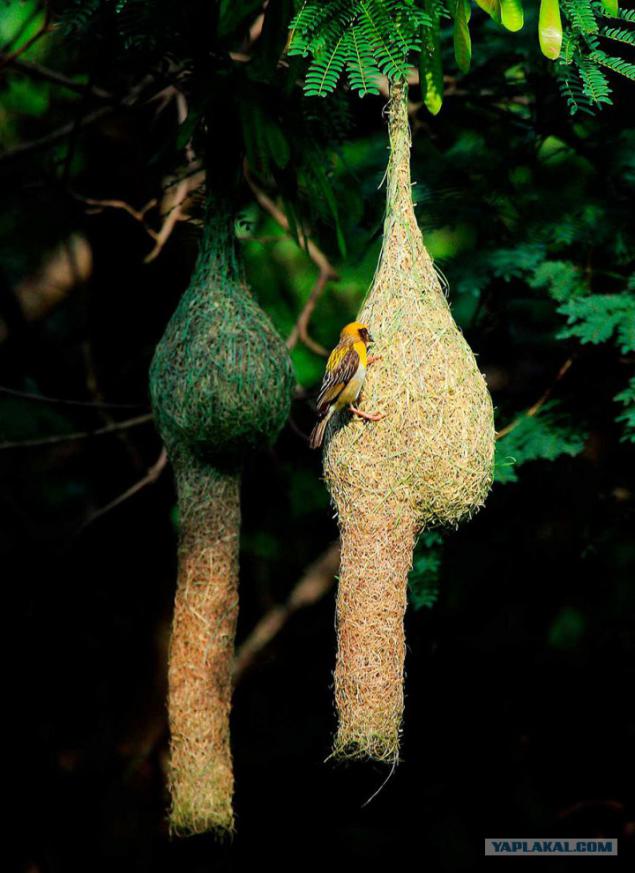
Osa ... Most wasps and do not build nests, preferring solitude or parasitic accommodation. However, social wasps nests build elegant paper from the pulp plant, saliva, and other resin materials. Inside the cell are similar to bees.

...
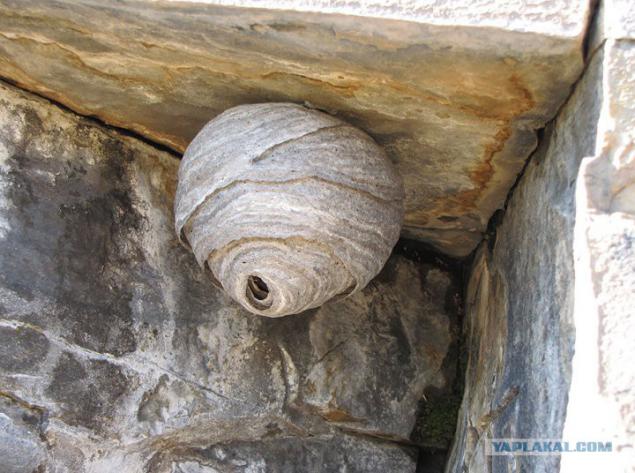
... Beavers Beavers build strong levees and dams that allow them to survive the cold, hide from predators and prey. Their dam can be really big, the largest was found in the National Park Wood Buffalo in Canada, and it was 850 meters in length.
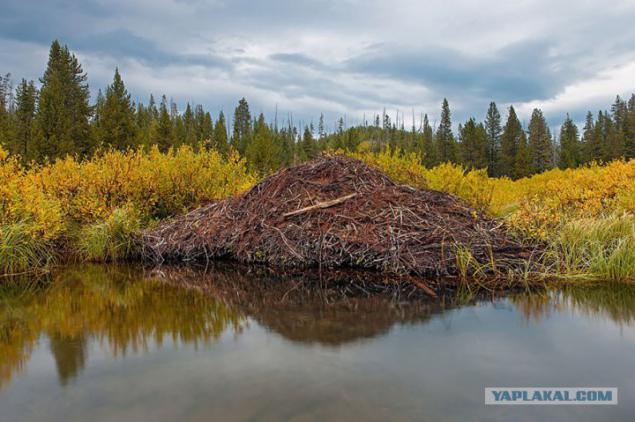
Montezuma oropendola ... Montezuma oropendola builds its nest on thin vines and grass. They usually live in colonies and 30 birds in each of which there is only one dominant male.
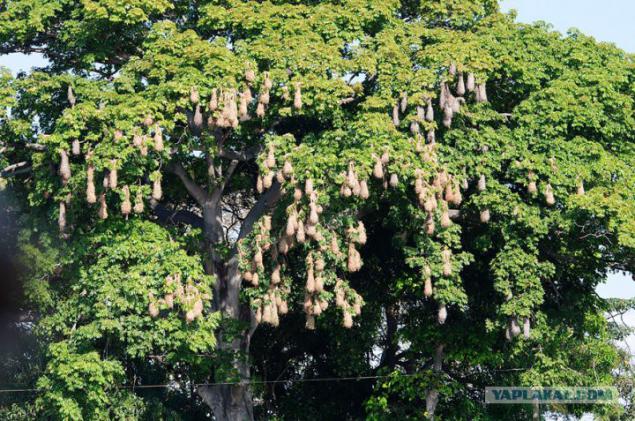
...

Swallow Swallows ... Some may live in the same nest for several years, only making it easy redecoration. Jacks are made of different materials, including saliva, clay and grass. Nests of swallows some are edible and are considered a delicacy.
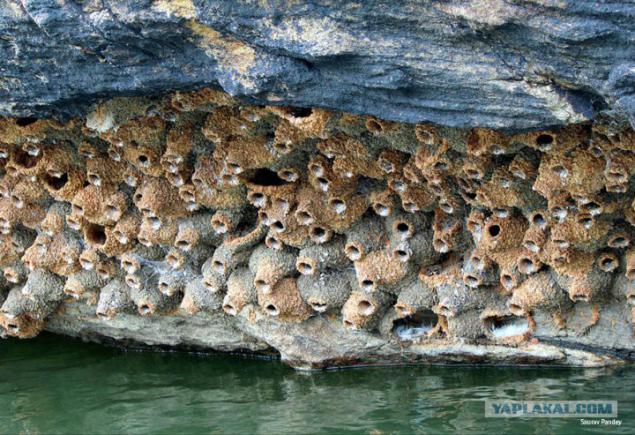
...
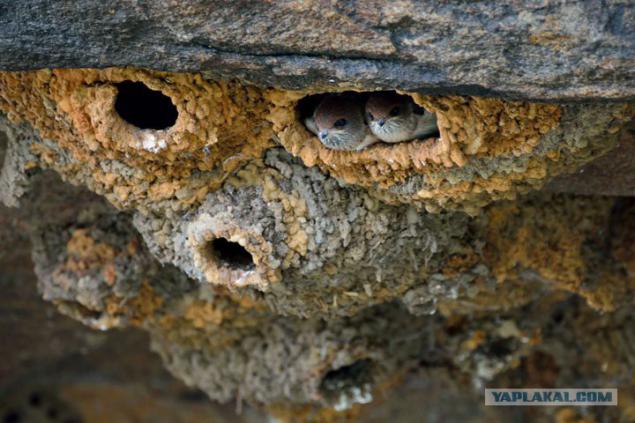
...
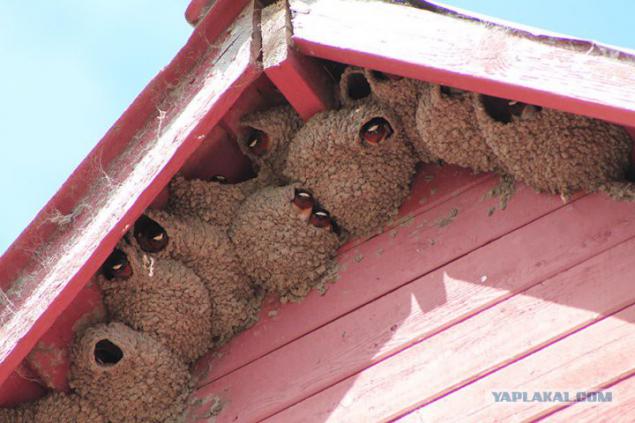
Caddis Caddis ... When it comes time to create a doll, he literally clings to everything. Sand, shells, pebbles and stones, mixed with his silk transformed into a safe cocoon.

source
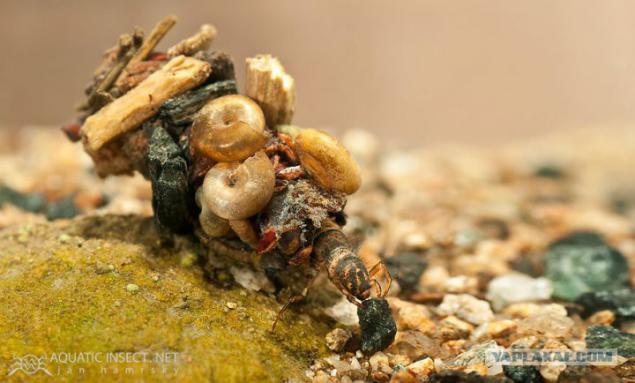
Animals are very careful in the construction of their home, whether it's nest or hive dam (in the case of beavers), they choose only the best materials. Without cranes, cement and iron, these little animals create a truly amazing building, causing us to you envy and respect.

Weaver ... Sociable weaver living in South Africa, Namibia and Botswana. They create these huge nests, where hundreds of birds can live for several generations. Nests of sticks and grass, built to last and also retain heat well.

...

...

...

Australian ant-tailor ... These ants live in Central Africa and Southeast Asia. These leaves are glued using larval silk.

Krasnouhov whistler ... Males of these birds build small huts made of grass and sticks to attract females for mating. As these designers they decorate the home berries, insects and other bright elements. Oddly enough, the females do not use these houses for rearing.

...

...

...

...

Termites ... Termites build their nests in the form of a large wedge-shaped mounds. Structures always oriented north-south, which allows them to regulate the temperature inside.

...

...

Bees ... The whole life of honeybees revolves around their hive. They build their houses out of wax, making them honey and raise their young.

...

European small forest ant ... Anthills they build in the form of large mounds on a grassy substrate. Several mounds can be linked together, allowing the colony to escape in case of danger.

Rufous hornero ... Rufous hornero builds its nest of mud and dirt. Their nests from predators and rescue are generally very safe place.

...

Weaver Weaver ... Bahia Bahia builds its nest in trees over water bodies where predators can not reach.

...

...

...

Osa ... Most wasps and do not build nests, preferring solitude or parasitic accommodation. However, social wasps nests build elegant paper from the pulp plant, saliva, and other resin materials. Inside the cell are similar to bees.

...

... Beavers Beavers build strong levees and dams that allow them to survive the cold, hide from predators and prey. Their dam can be really big, the largest was found in the National Park Wood Buffalo in Canada, and it was 850 meters in length.

Montezuma oropendola ... Montezuma oropendola builds its nest on thin vines and grass. They usually live in colonies and 30 birds in each of which there is only one dominant male.

...

Swallow Swallows ... Some may live in the same nest for several years, only making it easy redecoration. Jacks are made of different materials, including saliva, clay and grass. Nests of swallows some are edible and are considered a delicacy.

...

...

Caddis Caddis ... When it comes time to create a doll, he literally clings to everything. Sand, shells, pebbles and stones, mixed with his silk transformed into a safe cocoon.

source
























